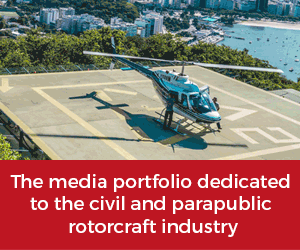
Loft Dynamics’ Fabi Reisen (right) and Dufour’s Thomas Pfammatter celebrate the companies’ partnership in Dübendorf. Photo: RHI
During this afternoon’s stratosphere summit at its inaugural ‘Loft Fest’ event (24 May 2024), VR Simulation OEM Loft Dynamics announced its expansion beyond helicopters to include electric vehicle takeoff and landing (eVTOL) aircraft simulators with the development of a simulator for Dufour Aerospace. While the two companies publicly announced the project at this afternoon’s conference, work on the project is at an advanced stage, with the Aero3 simulator expected to be available in early 2025.
“Our partnership with Dufour Aerospace represents a big stride forward in training a wider range of pilots at a time when operators need it most. It also lays groundwork for the eventual certification of our eVTOL simulator,” explained Fabi Riesen, founder and CEO of Loft Dynamics. “We started with helicopters, which are extremely challenging to simulate – the physics, motion, and human factors are more complex than in all other aircraft. This is why proving and qualifying our technology in the helicopter market, even beyond what’s mandated at the regulatory level, offers a significant advantage as we move into eVTOLs. Our 360-degree, 3D view – as well as highly detailed terrain and cityscape models and realistic ground effects – make our technology transferrable and incredibly valuable to eVTOLs. We’re thrilled to finally bring this vision to life with Dufour, a company at the leading edge of efficient and sustainable advanced air mobility technology.”
Dufour founder and CEO Thomas Pfammatter is an Air Zermatt helicopter rescue pilot who has flown over 4,500 missions and who has extensive experience with the Loft Dynamics VR simulator training device – which he describes as “by far the most realistic simulator I have ever flown.” As Dufour develops its tilt-wing Aero3 eVTOL, Pfammatter observed that Loft Dynamics’ simulator technology will allow the company to create a pilot interface with “unprecedented speed and cost efficiency”.
Pfammatter added: “The VR approach is undoubtedly superior among extended reality training solutions and is critical as we develop a man-machine interface for the Aero3. It allows pilots to integrate new concepts quickly and effectively, including tilt-wing operation and fountain lift and suckdown ground effects at low to zero speeds. Most importantly, it enables our pilots to gain experience in a safe and hyper-realistic environment. This will generate invaluable data as we develop the aircraft.”








